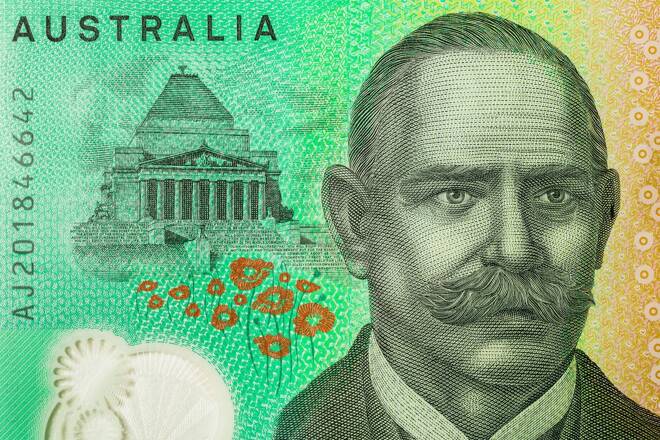Advertisement
Advertisement
AUD to USD Forecast: Australian Producer Prices Versus the US Core PCE Price Index
By:
Amid US economic resilience, the Aussie dollar's fate hinges on Australian producer prices, China's industrial profits, and US inflation.
Highlights
- The AUD/USD gained by 0.21% on Thursday, ending the session at $0.63215.
- Australian producer prices could influence RBA rate hike bets on Friday.
- Later in the Friday session, US personal income, inflation, and personal spending will dictate AUD/USD near-term trends.
Thursday Overview
The AUD/USD rose by 0.21% on Thursday. Partially reversing a 0.73% slide from Wednesday, the Aussie dollar ended the day at $0.63215. The Aussie dollar fell to a low of $0.62701 before reaching a high of $0.63307.
Australian Producer Prices and RBA Monetary Policy in Focus
On Friday, Australian producer prices will garner investor interest. Economists forecast producer prices to increase by 1.2% in Q3 vs. 0.5% in the previous quarter. Rising producer prices could signal increased demand and translate into higher consumer prices.
Hotter-than-expected producer prices could force the RBA to raise the cash rate. Higher interest rates impact borrowing costs and disposable income, forcing consumers to curb spending. A downward trend in spending would ease demand-driven inflationary pressure.
Economic indicators from China will also influence the buyer appetite for the Aussie dollar.
Chinese industrial profits warrant consideration. A less marked decline in profits could signal an improving macroeconomic environment. China accounts for one-third of Australian exports. With an Australian trade-to-GDP ratio of more than 50%, increasing demand from China would be a boon for the Australian economy.
US Personal Income, Inflation, and Spending in the Spotlight
On Thursday, the US GDP Report raised bets on the Fed leaving rates unchanged. However, US personal income, inflation, and spending figures could change the narrative on Friday. An increase in both personal spending and income, along with persistent inflation, may lead to increased speculation about a December Fed rate hike.
Economists forecast the Core PCE Price Index to rise by 3.7% in September (Aug: 3.9%). Personal spending and income predictions are upbeat. Economists expect personal spending to increase by 0.5% (Aug: 0.4%) and income to rise by 0.4% (Aug: 0.4%).
Hotter-than-expected inflation and personal spending could lead to a Fed rate hike. Higher interest rates impact disposable income, forcing consumers to curb spending. A downward trend in spending would ease demand-driven inflationary pressures.
Other stats include finalized Michigan Consumer Sentiment and Expectation figures. Upward revisions could counter the US GDP Report and concerns about disposable income and consumption.
Short-Term Forecast
After the US GDP Report, the AUD/USD rests on Australian producer prices and US inflation. Softer-than-expected US inflation figures could tip monetary policy divergence toward the Aussie dollar.
AUD/USD Price Action
Daily Chart
The AUD/USD hovered below the 50-day and 200-day EMAs, sending bearish price signals.
A return to $0.63500 would support a move to the $0.63854 resistance level and 50-day EMA. A more marked pickup in Australian producer prices and softer-than-expected US inflation would fuel an Aussie dollar breakout.
However, a drop below $0.63000 would give the bears a run at the $0.62749 support level and the trend line. Hotter-than-expected US inflation figures could fuel bets on a December Fed rate hike.
A 14-period Daily RSI reading of 43.91 indicates a fall below the trend line and $0.62749 support level before entering oversold territory (typically below 30 on the RSI scale).
4-Hourly Chart
The AUD/USD remains below the 50-day and 200-day EMAs, reaffirming bearish price signals.
A break above the 50-day EMA would support a move to the 200-day EMA and $0.63854 resistance level.
However, a fall below $0.63000 would give the bears a run at the $0.62749 support level and the trend line.
The 14-period 4-Hourly RSI at 48.10 indicates an AUD/USD break below the $0.62749 support level before entering oversold territory.
About the Author
Bob Masonauthor
With over 28 years of experience in the financial industry, Bob has worked with various global rating agencies and multinational banks. Currently he is covering currencies, commodities, alternative asset classes and global equities, focusing mostly on European and Asian markets.
Advertisement
